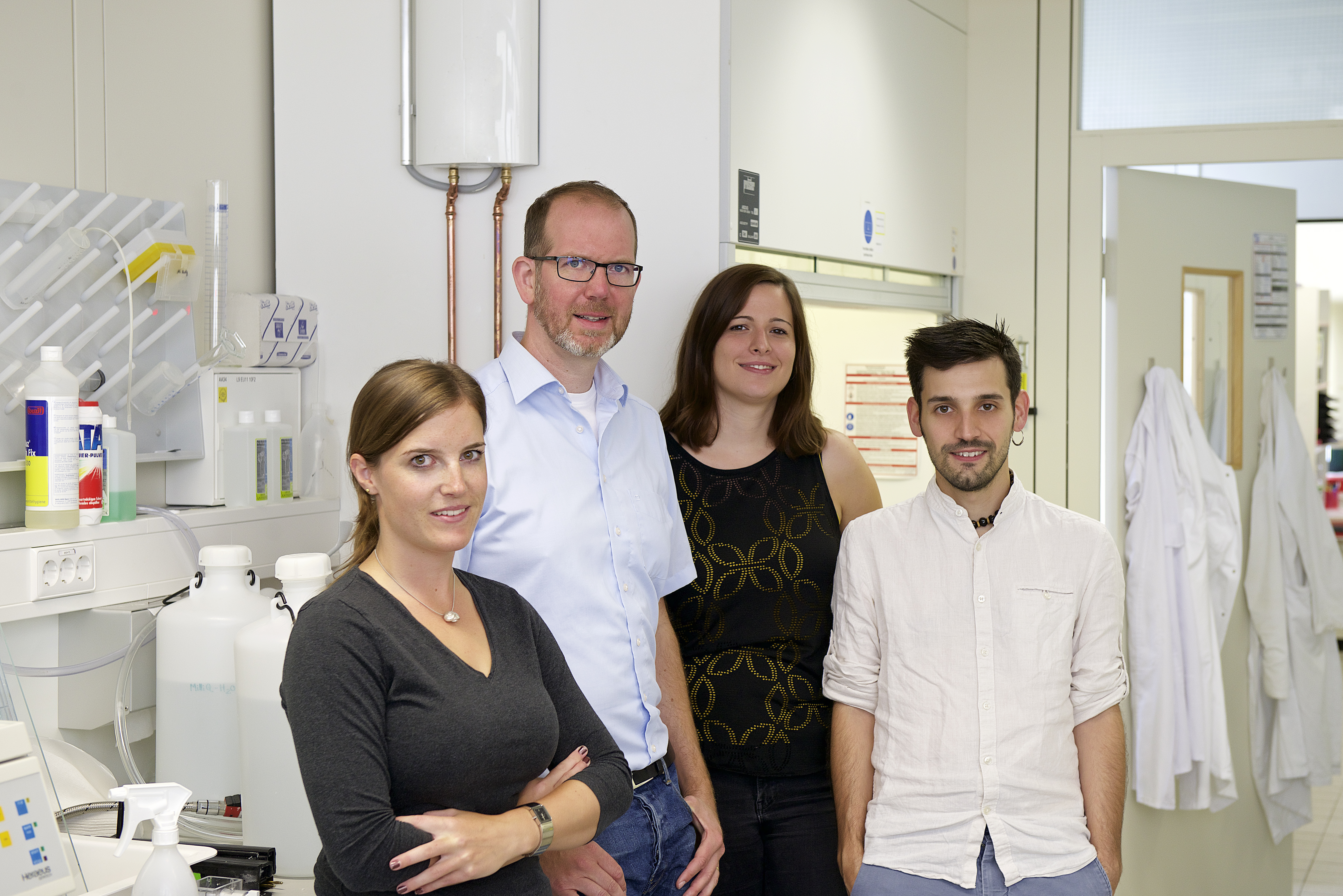
Genetic logic gates
Konstanz biochemists develop highly flexible gene switches based on the twister ribozyme
Recently, a new class of catalytically active ribonucleic acids (RNAs) that speeds up biochemical reactions was revealed with the discovery of the so-called twister ribozyme. A special characteristic of the twister ribozyme is that it cleaves itself. Biochemists at the University of Konstanz in the team around Professor Jörg Hartig have now used the twister ribozyme as a basis for a so-called genetic switch – a biochemical switch to control the specification of the genetic material in the cells. The ribozyme's self-cleavage is what the researchers use to directedly switch genes on or off. This new type of genetic switch with its principle of a logic gate provides more flexible and thus more precise control mechanisms to "programme" cells than previous genetic switches. The research results, published on 27 September 2016 in Nature Communications, have great potential for future biomedical applications.
Jörg Hartig's genetic switches based on the twister ribozyme are particularly suited for complex biochemical switch constructions in which the genetic switch element reacts to several simultaneous control signals. This process follows the pattern of the so-called Boolean logic gates known from electronics. A logic gate is a switch that processes signals from several line inputs to a single output result and can thus react to the presence or absence of several signals. It is possible to programme the activation of a switching pulse in different combinations: for example, only if all input lines receive a signal at the same time, or if there is no signal at any of the inputs - or in any either-or-combination. The large variety of combinations makes complex and precise control possible when genetically "programming" a cell. Here, the twister ribozyme allows significantly more freedom than previous genetic switches.
"The twister ribozyme is an extraordinarily flexible tool to control gene expression. We have identified and characterized more than 40 different genetic switches based on the twister ribozyme that can process signals from one or several input lines. Such a high diversity of genetic reactivity using only a single genetic tool has never been described before", says Jörg Hartig. The Konstanz biochemists demonstrated the functionality of this new class of genetic switches in bacteria and yeast.
Facts:
The German Research Foundation (DFG) funded this research project in the context of the Collaborative Research Centre SFB 969 "Chemical and Biological Principles of Cellular Proteostasis."
Original publication:
Felletti, M.; Stifel, J.; Wurmthaler, L.; Geiger, S.; Hartig, J.: Twister ribozymes as highly versatile expression platforms for artificial riboswitches. Nat. Commun. 7:12834 (2016).
DOI: 10.1038/ncomms12834 | www.nature.com/naturecommunications
